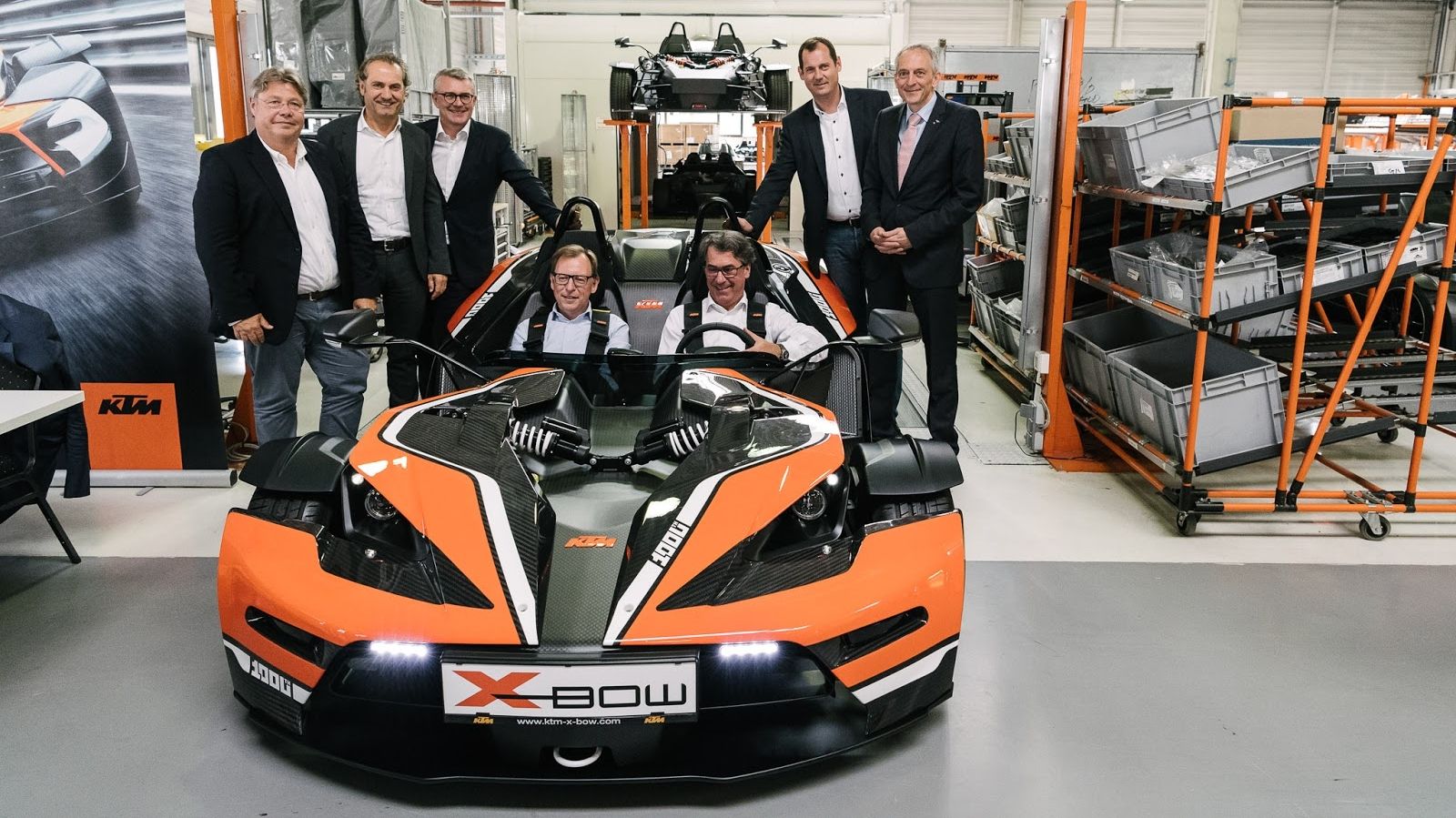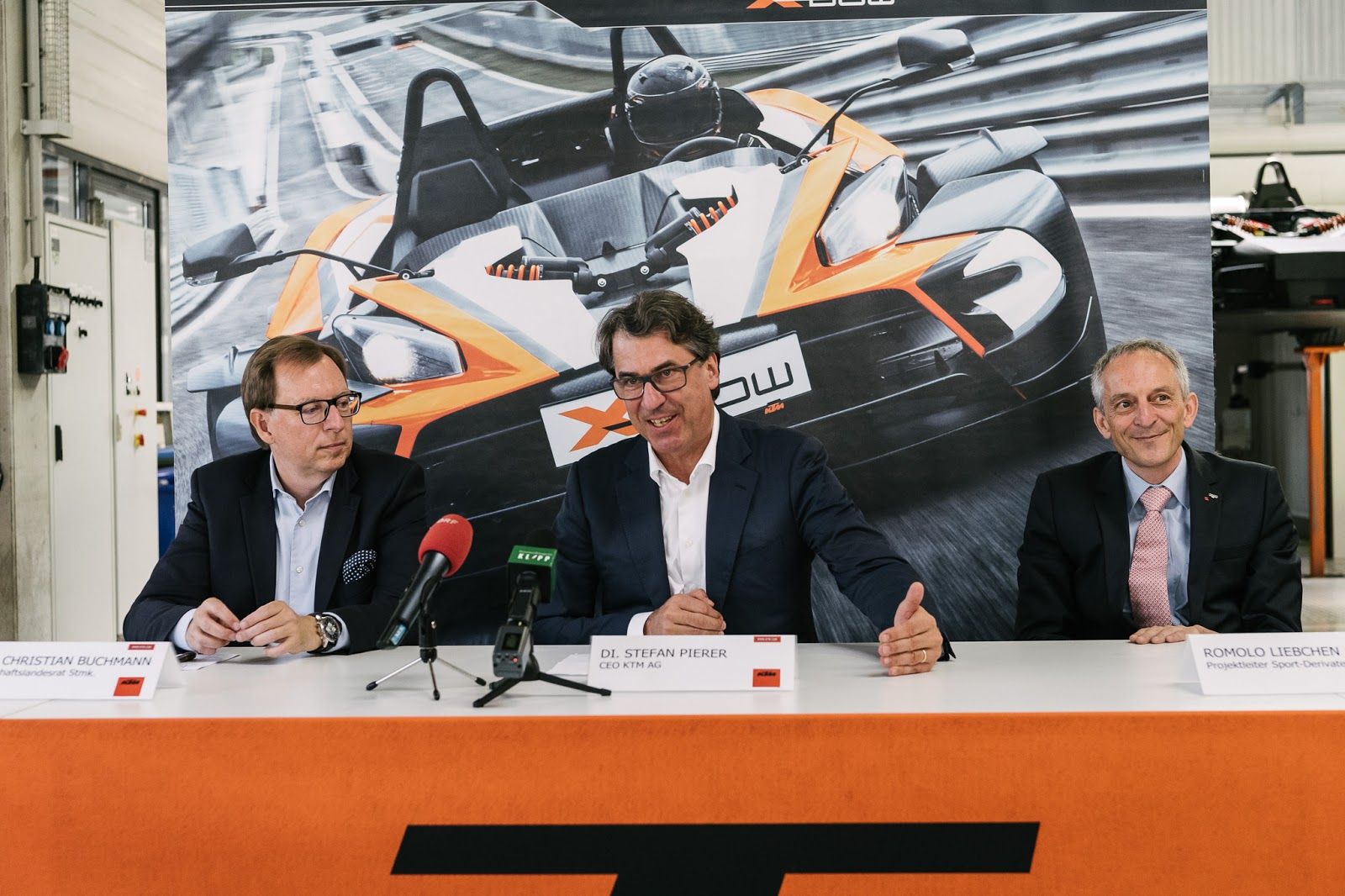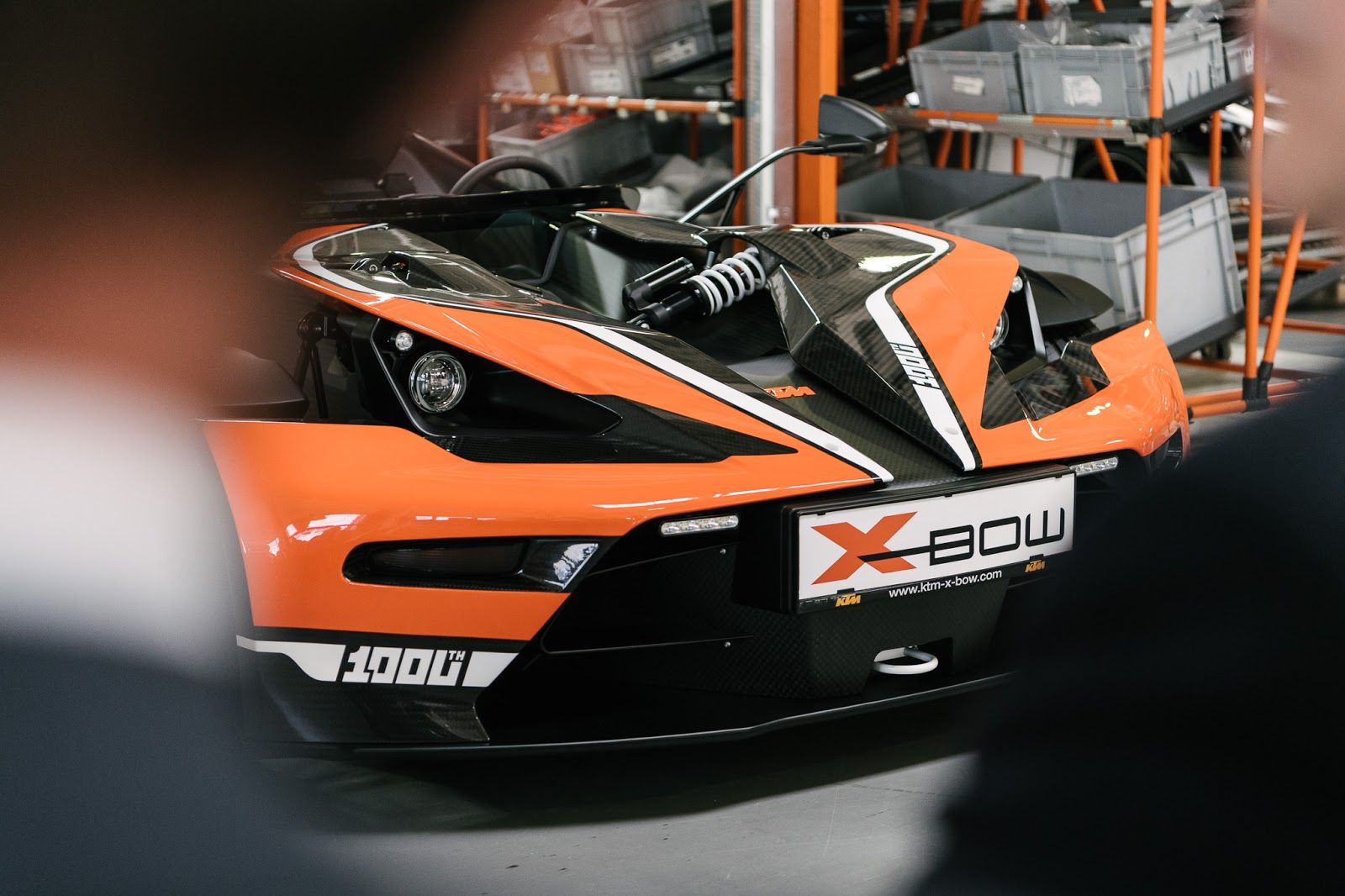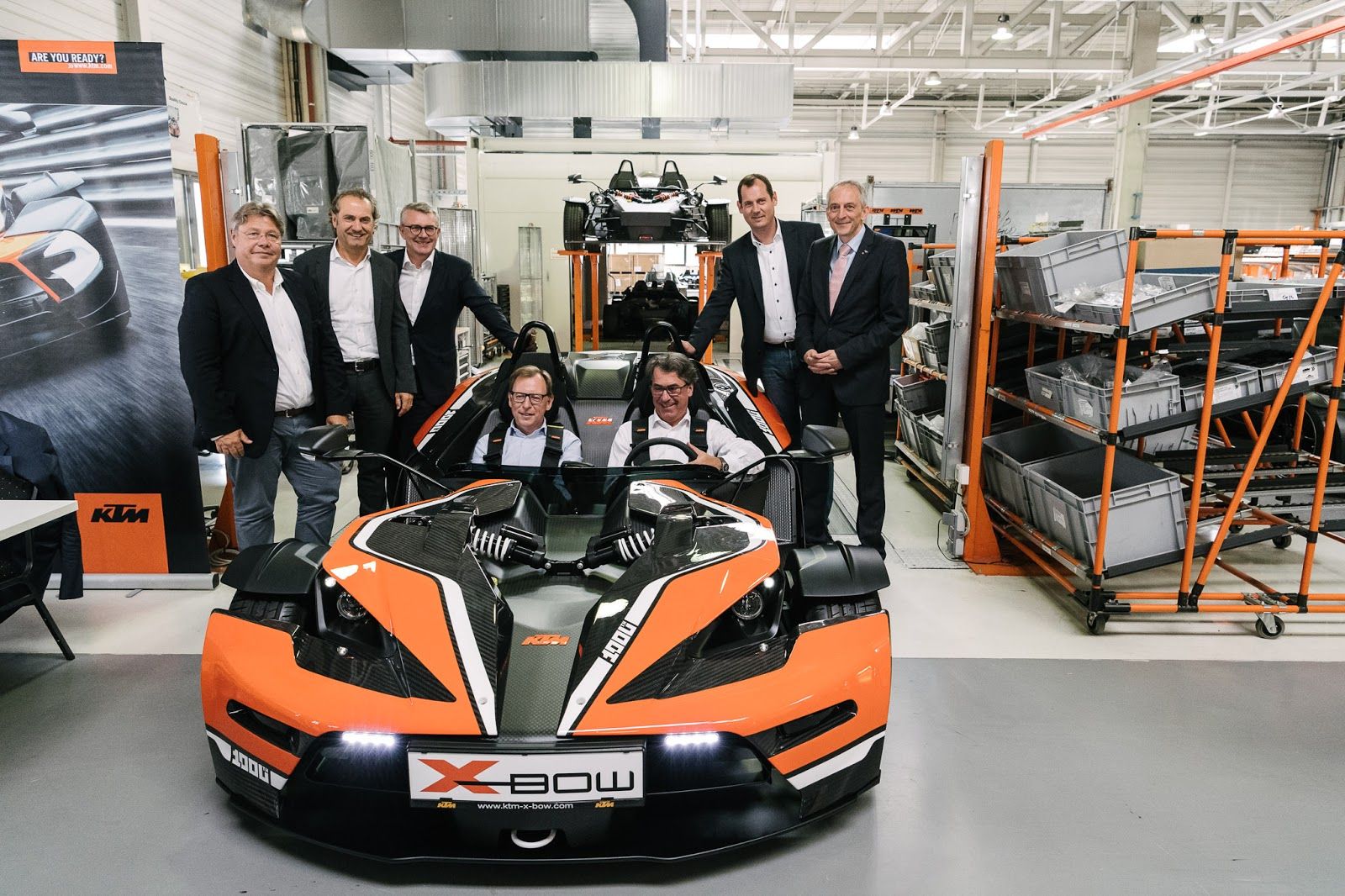Launched in 2008 by Austrian motorcycle manufacturer KTM, the X-Bow is the company's first actual car. A competitor for the likes of Caterham Seven and Ariel Atom, the X-Bow is a lightweight, street-legal sports car that weighs less than 800 kg (1,763 pounds). It was built around a chassis developed by Dallara and uses an Audi engine to move about. The turbocharged four-cylinder is offered in three configurations, each powering a different model. The lineup includes the X-Bow R, the X-Bow RR, and the X-Bow GT. After eight years of soldiering on unchanged, the Austrian sports car received a minor facelift for the 2017 model year.
The upgrade was announced just as the 1,000th X-Bow rolled of the assembly line during a special ceremony at the company's factory. The facelift doesn't bring many changes to the sports car, but it's a great way for KTM to mark an important benchmark in the X-Bow's career. Granted, 1,000 units might not mean much to mainstream manufacturers, but it's an important achievement for a niche vehicle.
"A success story in so many ways. This was of course a steep learning curve for us, in part due to the global economic crisis that started when the product was launched. However, after selling 1,000 cars to many delighted and enthusiastic customers, the KTM X-BOW cannot be seen as anything other than a success story – especially in purely economic terms!" said KTM CEO Stefan Pierer.
The so-called facelift also brings important news in the availability department. For the first time since its introduction, the X-Bow will be sold in North America starting in 2017, when KTM will have a subsidiary and a network of dealers in both the United States and Canada.
Continue reading to learn more about the 2017 KTM X-Bow R.
2017 KTM X-Bow R
- Make: Array
- Model: 2017 KTM X-Bow R
- Horsepower: 296
- Transmission: six-speed manual
- [do not use] Vehicle Model: Array
Exterior
Visually, the facelift is rather mild. That's not necessarily a bad thing since most customers buy the X-Bow for the performance and not the looks, but don't look for more than just a few nips and tucks. Up front, the most notable change is the addition of LED daytime running lights, revised headlamps, and a bigger, more aggressive splitter. Everything else remains unchanged, including that sexy X-shaped shell that covers the nose.
KTM has yet to publish photos of the car's rear end, but said that the engine lid now has ventilation slits similar to those on the X-Bow GT. Speaking of the latter, KTM said it will continue to offer fixed windscreens and glass side doors to those who'd rather have a more conventional body configuration.
Interior
KTM didn't have much to say about the interior, but it's safe to assume that nothing changed. Not exactly a big deal given that the X-Bow's cockpit is as spartan as they get. The sports car comes with just two seats and a carbon-fiber shell. Instead of the dashboard, door panels, and center console, there just a tiny screen in front of the gear shifter for all the information a driver needs during a hot lap at the 'Ring. That's speed, rpm, gears, acceleration, lap times, and top speed. The steering wheel comes wrapped in leather for better grip and contains 10 buttons that activate the lights, the turn signals, the horn, as well as allow to browse through driving modes. Simple and fun!
Drivetrain
Moving onto the oily bits, KTM says that the facelifted X-Bow carries over with "a few minor improvements" under the hood. Although it doesn't give out specific details, it mentions that the turbocharged, 2.0-liter engine sourced from Audi cranks out the same 300 PS (296 horsepower). It mates to a six-speed manual gearbox, also borrowed from Audi, and a Drexler limited-slip differential. The minor updates shouldn't alter the car's performance specs, meaning that the X-Bow R will continue to sprint from 0 to 62 mph in 3.9 seconds and toward a top speed of 143 mph.
The chassis should also carry over unchanged, including the pushrod suspension derived from the world of Formula One. The system includes compression damping with high and low-speed settings as well as adjustable rebound damping. This kind of suspension is rarely used on a production vehicle and is arguably one of the X-Bow's most expensive components.
Stopping power comes from a Brembo braking system, featuring a four-piston, fixed-caliper brake on the front axle, with an internally ventilated, slotted disc measuring 305 mm (12 inches) in diameter; the rear unit is a two-piston, fixed-caliper brake with a diameter of 262 mm (10.3 inches). The wheels are wrapped in Michelin Pilot Supersport high-performance tires that provide excellent handling in both the dry and the wet.
Prices
Pricing for the facelifted will will start from €74,900 (about $82,940) in Europe. The sticker doesn't include VAT, which means that the X-Bow R will actually fetch around €89,000 (around $98,550,) depending on the market.
The good news here is that KTM is about to roll out the first vehicles designed specifically for the North American market. According to the company, they will arrive in the U.S. and Canada in spring 2017, when KTM will have established a North American subsidiary along with a small network of dealers. No information on pricing, though.
Competition
Caterham Seven 420
The KTM X-Bow was specifically developed as a competitor for the Caterham Seven. Arguably the oldest and most iconic lightweight, no-nonsense sports car, the Seven is offered in many specifications in both Europe and the U.S. Available in North America via Superformance, the Seven crosses the pond in four "trim" levels: 270, 360, 420, and 620R. The latter is about on par with the X-Bow R in terms of horsepower at 310 horses, but because it's significantly lighter, it's more than a second quicker. The 210-horsepower 420, on the other hand, is right up the X-Bow R's alley. Don't let the less powerful 2.0-liter Duratec engine fool you, the 420 needs only 3.8 seconds to hit 60 mph from a standing start. Top speed sits a tad lower at 136 mph, but this won't make much of a difference on a twisty track like Laguna Seca. When it arrives in the U.S., the X-Bow R will need to defeat the Seven 420 to make a point. The 420 retails from around $50K, but the sticker doesn't include the drivetrain. Also, the Seven can get really expensive with options, especially if you want the wider body and the carbon-fiber parts.
Find out more about the Caterham Seven 420 here.
Ariel Atom
Sporting a unique design that does not include a proper body, the Ariel Atom is also a new entry to the superlight sports car market. Much like the X-Bow, its engine is mounted just behind the cockpit, but Ariel sourced its motivator from Honda. Specifically, the Atom gets its juice from a 2.4-liter four-cylinder rated at 230 horsepower, which pushes the 1,350-pound vehicle from 0 to 60 mph in a scant three seconds. The transmission is a close-ratio six-speed manual, which routes to a limited-slip differential in the back. The stock brakes are single-pistons, but can be upgraded to either Wilwood Dynalite four-pots, or Alcon racing four-pots. Pricing starts from $64,500 in the United States.
Read more about the Ariel Atom here.
Conclusion
While I've been a big fan of the Caterham Seven ever since I was a little boy, I must admit that the KTM X-Bow is a pretty good option to the British icon. But only as long as you don't want to hit 60 mph in less than three seconds. If you're not a stickler for figures, you're only aim is to post lap times that would make any Ferrari owner throw his hat in the ring, and you don't fancy the Seven's classic bodywork, than the KTM is one of the best options to consider. The big news here is that the car is finally coming to the U.S. and, who knows, maybe the "facelift" will also spawn a version light and powerful enough to give the Seven 620R a run for its money.







